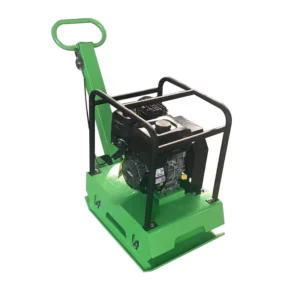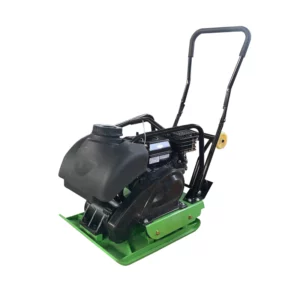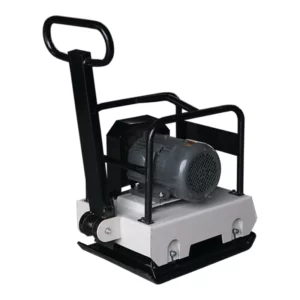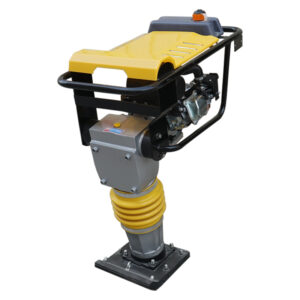INTRODUCTION
This manual provides information regarding the safe operation and maintenance of this product. Every effort has been made to ensure the accuracy of the information in this manual.
Henan Xinsda Machinery Technology Co.,Ltd reserves the right to change this product and specifications at any time without prior notice.
Please keep this manual available to all users during the entire life of the plate compactor.
GENERAL SAFETY PROCEDURES
Plate compactor exhaust contains carbon monoxide (CO). This is a poison gas you cannot see or smell. If you can smell the plate compactor exhaust, you are breathing CO. But even if you cannot smell the exhaust, you could be breathing CO.
Even if you use a compactor correctly, CO may leak into the home. Always use a battery-powered or battery-backup CO alarm in the home.
If you start to feel sick, dizzy, or weak after the plate compactor has been running, move to fresh air RIGHT AWAY. See a doctor. You may have carbon monoxide poisoning.
The Plate Compactor should only be used in outdoor areas. Carbon monoxide fumes (from the gasoline engine) are a colorless, odorless gas that, if inhaled, can cause serious illness or death. If the Plate Compactor is used in enclosed spaces, the area must be well-ventilated and Engine exhaust fumes must be piped out of the enclosed space using leak-free, heat-resistant piping. The pipes should not use any flammable materials, nor should they be installed near the same. Engine exhaust fumes must be within legal limits.
Before performing compacting work near buildings or above pipelines, check the effect of the vibrations on the buildings and pipelines. If necessary, immediately stop the compacting work

STARTING THE PLATE COMPACTOR
Before starting the plate compactor, make sure you have read and performed the steps in the “Plate compactor Preparation” section of this manual.
To start your plate compactor, perform the following steps:
- Check the oil and fuel levels.
- Turn the fuel valve to the “on” position.
- Move the choke lever to the “start” position.
- Set the engine switch to the “on” position.
- Move handle lever to MIN position.
- Pull on the recoil starter handle slowly until a slight resistance is felt. Then pull quickly to start the engine. Return cord gently into the machine. Never allow the cord to snap back.
- If engine fails to start, repeat step 7. NOTE: After repeated failed attempts to start the engine, please consult the troubleshooting guide before attempting again.
- Once the engine has started, slowly return the choke lever all the way to the “open” position.
- Allow the plate compactor to run for several minutes before engaging the compactor.
- Move handle lever to MAX position to engage the plate.

SUBSEQUENT STARTING OF THE PLATE COMPACTOR
If this is not the first time using the plate compactor, user should take the following steps to prepare it for operation.
IMPORTANT: At this point the user should be familiar with the procedures described in the section titled “Using the Plate compactor for the First Time.” If the user has not yet read this section, go back and read it now.
Step 1- Check the Oil
Oil consumption is normal during plate compactor usage. The plate compactor is equipped with a low-oil shutoff to protect it from damage. The oil level in the engine should be checked before each use to ensure that the engine crankcase contains sufficient lubricant.
To check or add oil, follow these steps:
- Make sure the plate compactor is on a level surface. Clean around oil fill.
- Remove the oil filler/dipstick cap and check oil level.
- If oil level is below the second thread from the lip of the oil fill opening, slowly add oil until the engine crankcase is filled.
- Reinstall and tighten oil filler cap before starting the engine. .
Step 2 – Check the Fuel Level

Before starting the plate compactor, check to see that there is sufficient gasoline in the fuel tank. The fuel gauge on top of the plate compactor will indicate the fuel level in the tank. Add gasoline if necessary but leave sufficient room in tank for expansion.
- Do not operate near open flame.
- Do not smoke near plate compactor.
- Always operate on a firm, level surface.
- Always turn engine off before refueling. Allow engine to cool for at least 2 minutes before removing fuel cap. Loosen cap slowly to relieve pressure in tank.
- Do not overfill fuel tank. Gasoline may expand during operation. Do not fill to the top of the tank. Allow for expansion.
- Always check for spilled fuel before operating. Clean up any spilled fuel before starting.
- Empty fuel tank before storing or transporting the plate compactor.
- Before transporting, turn fuel valve to off and disconnect spark plug wire.
IMPORTANT:
- Use only UNLEADED gasoline with an octane rating of 87 or higher.
- Do not use old gasoline.
- Never use an oil/gasoline mixture.
- Avoid letting dirt or water into the fuel tank.
USING THE PLATE COMPACTOR
This plate compactor is designed for compacting loose, granular soils, gravel, and paving stones. It is intended to be used in confined areas and areas next to structures such as walls, curbs, and foundations.
This plate compactor is not recommended for compacting cohesive soils with heavy clay content. Run the engine at full throttle and allow the plate to pull itself along at its normal speed.
When operating on an incline it may be necessary to assist the plate by pushing it forward slightly. When operating downhill hold the plate back slightly, if it begins to pick up speed.
Depending on the material being compacted, three or four passes are recommended to achieve the best compaction.
While a certain amount of moisture in the soil is necessary, excessive moisture may cause soil particles to stick together and prevent good compaction. If soil is extremely wet, allow it to dry somewhat before compacting.
If soil is so dry as to create dust clouds while operating plate, some moisture should be added to the ground material to improve compaction. This will also reduce service to the air filter.
For compacting asphalt, use a water tank to wet the asphalt and the underside of plate. This will prevent asphalt material from sticking. Two passes are usually sufficient to ensure good compaction.
STOPPING THE PLATE COMPACTOR
To stop the plate compactor:
- Move handle lever to MIN position to disengage the compactor.
- Turn the engine switch to the “OFF” position.
- Turn the fuel valve to the “OFF” position.


